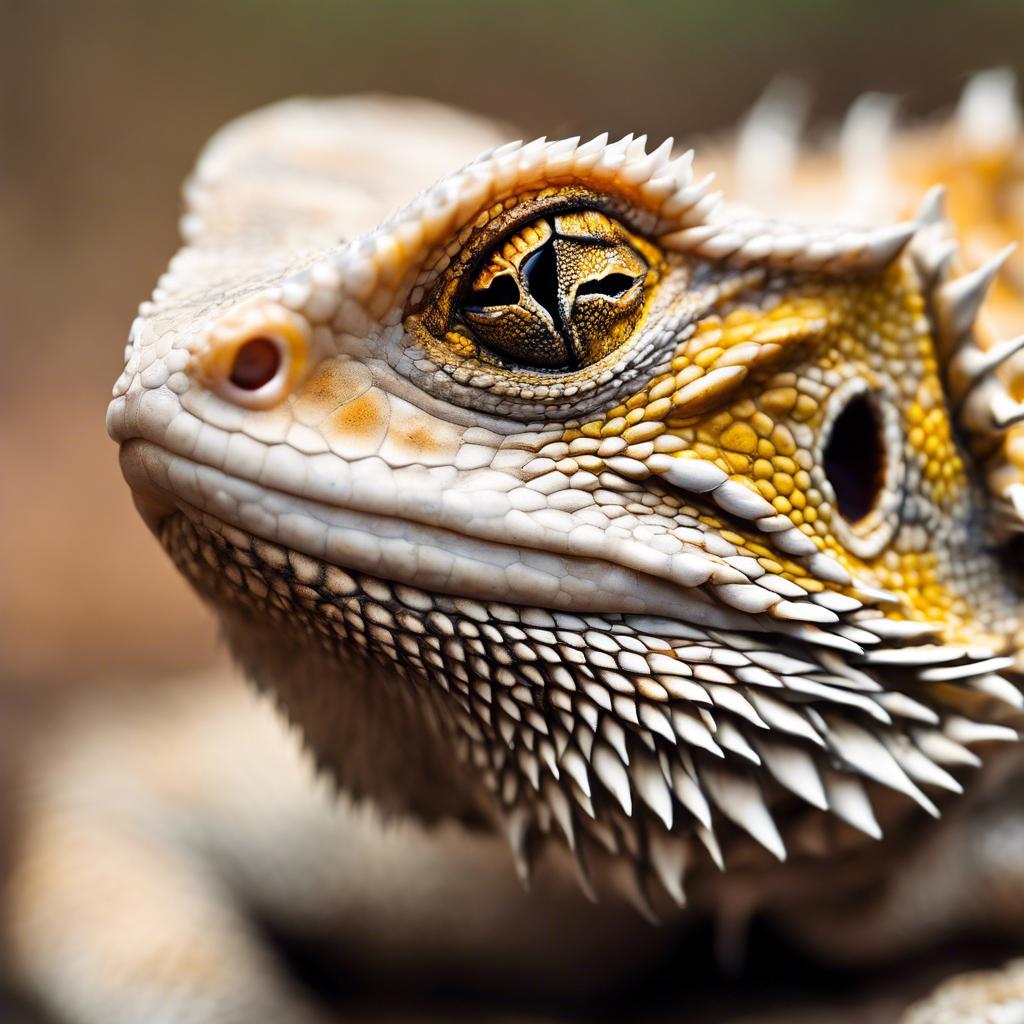Bearded dragons are fascinating reptiles that have become popular pets in recent years. Native to Australia, these lizards are known for their unique appearance, with spiky scales and a beard-like flap of skin under their chin. Understanding the behavior of bearded dragons is crucial for their well-being and overall health. In this article, we will focus specifically on the behavior of female bearded dragons, with a particular emphasis on head bobbing.
Key Takeaways
- Bearded dragons are a species of lizard that require understanding of their behavior.
- Head bobbing is a common behavior in bearded dragons that has specific reasons.
- Female bearded dragons also head bob, but for different reasons than males.
- Head bobbing in female bearded dragons has significance in their social interactions.
- Proper care and monitoring of behavior is important for the health of female bearded dragons.
What is head bobbing?
Head bobbing is a common behavior observed in bearded dragons. It involves the lizard rapidly moving its head up and down in a rhythmic motion. This behavior can be seen in both male and female bearded dragons, although it is more commonly associated with males.
There are several reasons why bearded dragons engage in head bobbing. One of the most common reasons is communication. Bearded dragons use head bobbing as a way to communicate with other lizards, both within their own species and with other species. It can be a way to establish dominance or to signal submission.
Is head bobbing exclusive to male bearded dragons?
While head bobbing is more commonly associated with male bearded dragons, females can also exhibit this behavior. However, there are some differences in the way males and females head bob.
Male bearded dragons tend to head bob more frequently and vigorously than females. They often do it as a display of dominance, especially during mating season. Males may also head bob when they feel threatened or when they encounter another male.
On the other hand, female bearded dragons may head bob for different reasons. One possible explanation is that they are trying to communicate their receptiveness to mating. Female bearded dragons may also head bob as a way to establish their territory or to communicate with other females.
What does head bobbing mean for female bearded dragons?
Interpreting head bobbing behavior in female bearded dragons can be more challenging than in males. While it is clear that head bobbing serves a communication purpose, the exact meaning can vary depending on the context.
In some cases, female bearded dragons may head bob to signal their readiness to mate. This behavior can be observed during the breeding season when females are receptive to male advances. By head bobbing, females are indicating their willingness to engage in mating behavior.
Head bobbing can also be a way for female bearded dragons to establish their territory. They may engage in this behavior when they encounter other females or when they feel threatened by other lizards. It serves as a way to assert dominance and establish boundaries.
How to care for female bearded dragons
Caring for female bearded dragons is similar to caring for males, but there are some specific considerations to keep in mind. Here is an overview of bearded dragon care and some specific tips for caring for female bearded dragons:
1. Housing: Female bearded dragons require a spacious enclosure with proper heating and lighting. The enclosure should have a temperature gradient, allowing the dragon to regulate its body temperature.
2. Diet: Bearded dragons are omnivores and require a balanced diet of insects, vegetables, and fruits. It is important to provide a variety of food options to ensure they receive all the necessary nutrients.
3. Hydration: Bearded dragons need access to fresh water at all times. They may also benefit from regular misting or bathing to maintain proper hydration.
4. Veterinary care: Regular veterinary check-ups are essential for the overall health of your female bearded dragon. A veterinarian experienced with reptiles can provide guidance on proper care and address any health concerns.
Health issues related to head bobbing

While head bobbing is a natural behavior for bearded dragons, excessive or abnormal head bobbing can indicate underlying health issues. It is important to monitor your female bearded dragon's behavior and seek veterinary care if you notice any concerning signs.
Excessive head bobbing can be a sign of stress or illness. It may indicate respiratory problems, metabolic disorders, or parasites. If your female bearded dragon is head bobbing excessively or displaying other abnormal behaviors, it is important to consult with a veterinarian to rule out any potential health issues.
Can head bobbing be prevented?
Preventing head bobbing behavior in female bearded dragons can be challenging, as it is a natural behavior for them. However, there are some steps you can take to minimize stress and create a suitable environment for your lizard:
1. Provide a spacious enclosure: Female bearded dragons need ample space to move around and establish their territory. A cramped enclosure can lead to stress and increased head bobbing behavior.
2. Maintain proper temperature and lighting: Bearded dragons require specific temperature and lighting conditions to thrive. Ensure that the enclosure has proper heating and lighting sources to mimic their natural habitat.
3. Offer enrichment: Providing environmental enrichment, such as hiding spots, climbing structures, and toys, can help reduce stress and provide mental stimulation for your female bearded dragon.
What to do if your female bearded dragon head bobs excessively
If you notice excessive head bobbing behavior in your female bearded dragon, it is important to take action. Excessive head bobbing can indicate underlying health issues or stress that needs to be addressed.
The first step is to consult with a veterinarian experienced in reptile care. They can perform a thorough examination and run any necessary tests to determine the cause of the excessive head bobbing. Treatment options will depend on the underlying cause but may include medication, dietary changes, or environmental modifications.
Other behaviors to watch out for in female bearded dragons
While head bobbing is one behavior to watch out for in female bearded dragons, there are other behaviors that may indicate health issues. These include:
1. Loss of appetite: A sudden decrease in appetite or refusal to eat can be a sign of illness or stress.
2. Lethargy: If your female bearded dragon is unusually inactive or lacks energy, it may be a sign of an underlying health problem.
3. Abnormal feces: Changes in the color, consistency, or frequency of your bearded dragon's feces can indicate digestive issues or parasites.
4. Skin problems: Bearded dragons can develop skin infections or shed irregularly. Pay attention to any changes in their skin condition.
It is important to be aware of these behaviors and seek veterinary care if you notice any concerning signs.
Understanding and caring for female bearded dragons is crucial for their well-being and overall health. Head bobbing is a common behavior observed in both male and female bearded dragons, but it can have different meanings depending on the context. Female bearded dragons may head bob to communicate their receptiveness to mating or to establish their territory.
Caring for female bearded dragons involves providing a suitable environment, proper nutrition, and regular veterinary care. It is important to monitor their behavior and seek veterinary attention if you notice any concerning signs, such as excessive head bobbing or other abnormal behaviors. By understanding their behavior and providing appropriate care, you can ensure that your female bearded dragon lives a happy and healthy life.
If you're curious about why female bearded dragons head bob, you'll definitely want to check out this informative article on Reptile Wizard's blog. It delves into the fascinating behavior of head bobbing in female bearded dragons and provides valuable insights into what it means and why it occurs. Understanding this behavior is crucial for any bearded dragon owner, as it can help ensure the well-being and happiness of these amazing reptiles. To learn more, click here: https://reptilewizard.com/blog/.
FAQs
What is head bobbing in bearded dragons?
Head bobbing is a common behavior in bearded dragons where they rapidly move their head up and down. It is a way of communication and can indicate various things such as aggression, submission, or mating behavior.
Do female bearded dragons head bob?
Yes, female bearded dragons can head bob. It is not limited to males only and can be seen in both sexes.
What does head bobbing in female bearded dragons indicate?
Head bobbing in female bearded dragons can indicate various things such as territorial behavior, submission, or mating behavior. It is important to observe other body language and behavior to determine the reason for head bobbing.
Is head bobbing in female bearded dragons a sign of illness?
No, head bobbing in female bearded dragons is not necessarily a sign of illness. It is a natural behavior and can be seen in healthy individuals.
Should I be concerned if my female bearded dragon is head bobbing?
It depends on the context and frequency of head bobbing. If it is accompanied by other signs of aggression or stress, it may indicate a problem. However, if it is a one-time occurrence or part of normal behavior, there is no need for concern.

